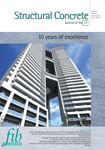
Structural Concrete
Scope & Guideline
Advancing the Future of Concrete Engineering
Introduction
Aims and Scopes
- Innovations in Concrete Materials and Mix Design:
The journal emphasizes research on novel concrete materials, including high-performance concrete (HPC), ultra-high-performance concrete (UHPC), and geopolymer concrete, focusing on their mechanical properties, durability, and applications. - Structural Behavior and Performance Analysis:
It covers studies on the structural behavior of concrete under various loading conditions, including static, dynamic, and seismic loads, along with the development of predictive models for performance assessment. - Sustainability and Recycling in Concrete Technology:
The journal promotes research on sustainable practices in concrete production, including the use of recycled materials and by-products, as well as the environmental impact of concrete structures. - Advanced Numerical and Experimental Methods:
Research utilizing advanced numerical modeling techniques, experimental investigations, and machine learning approaches for analyzing and predicting the behavior of concrete structures is a key focus area. - Structural Health Monitoring and Maintenance:
Studies on innovative monitoring techniques, damage assessment, and rehabilitation strategies for existing concrete structures to enhance their safety and longevity are also highlighted. - Interdisciplinary Approaches to Concrete Engineering:
The journal encourages interdisciplinary research that integrates concrete technology with other fields, such as civil engineering, materials science, and environmental engineering.
Trending and Emerging
- Machine Learning and AI in Concrete Research:
There is an increasing application of machine learning and artificial intelligence techniques for predicting concrete properties, optimizing mix designs, and assessing structural performance. - Sustainable Concrete Practices:
Research focusing on sustainability, including the use of recycled materials, low-carbon concrete, and eco-friendly production processes, is gaining significant attention. - Smart and Self-Sensing Concrete Technologies:
Emerging technologies in smart concrete, including self-sensing and self-healing capabilities, are becoming a prominent area of research, aimed at enhancing structural resilience. - Advanced Structural Health Monitoring Techniques:
The integration of advanced monitoring techniques, such as fiber optic sensors and digital twins, for real-time assessment and maintenance of concrete structures is on the rise. - Seismic Resilience and Performance-Based Design:
There is an increased focus on improving the seismic resilience of concrete structures through performance-based design methodologies and innovative reinforcement techniques.
Declining or Waning
- Traditional Reinforcement Techniques:
There has been a noticeable decrease in research focused on conventional reinforcement methods, such as standard steel reinforcement, as newer materials and techniques gain traction. - Basic Concrete Mix Designs:
Research centered around basic concrete mix designs without advanced additives or fibers has become less prevalent, with a shift towards more innovative and high-performance concrete formulations. - Historical Analysis of Concrete Structures:
Papers focusing solely on historical analysis or case studies of old concrete structures are declining, as the field increasingly emphasizes contemporary applications and advanced technologies. - Simple Structural Analysis Methods:
There is a reduced frequency of studies employing traditional, simplistic analysis methods in favor of more complex, accurate, and computationally intensive approaches. - Low-Performance Concrete Applications:
Research on low-performance concrete applications has waned, with a growing emphasis on high-performance and sustainable concrete solutions that meet modern engineering demands.
Similar Journals

ACI MATERIALS JOURNAL
Innovating Materials for a Sustainable FutureWelcome to the ACI Materials Journal, a premier publication in the field of materials science and engineering, published by the American Concrete Institute. Since its inception in 1987, this journal has continually contributed to advancing the understanding of concrete materials and structures, playing a vital role in both academic and practical applications. With an impressive impact factor and consistently ranking in the Q1 category for Building and Construction and Civil and Structural Engineering, the ACI Materials Journal is recognized for its rigorous peer-review process and high-quality research contributions. It serves as a crucial platform for researchers, practitioners, and students, featuring articles that explore innovative materials, sustainable practices, and cutting-edge technology, all of which are essential for the future of the civil engineering domain. Although the journal is not open access, it remains accessible to a vast audience through institutional subscriptions.

Innovative Infrastructure Solutions
Transforming Ideas into Innovative Infrastructure Solutions.Innovative Infrastructure Solutions is a leading academic journal published by Springer International Publishing AG, focusing on pioneering advancements in the fields of building and construction, civil and structural engineering, and environmental engineering. With an impact factor that reflects its significant role in the academic community, this journal serves as a vital platform for researchers, professionals, and students to disseminate groundbreaking studies and novel methodologies spanning diverse engineering disciplines. Since its inception in 2016, Innovative Infrastructure Solutions has steadily positioned itself within the Q2 category across several fields, including geotechnical engineering and engineering geology, as recognized in the 2023 quartiles. This reputable journal, accessible from Switzerland, not only emphasizes collaboration and knowledge exchange but also empowers innovators in infrastructure development globally. Whether you're contributing to a research project or seeking the latest findings, Innovative Infrastructure Solutions remains essential for anyone invested in advancing sustainable infrastructure solutions.
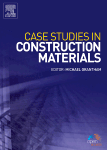
Case Studies in Construction Materials
Unlocking the Future of Construction MaterialsCase Studies in Construction Materials, an esteemed journal published by Elsevier, provides a vital platform for the dissemination of scholarly research in the field of materials science, focusing particularly on innovations and advancements in construction materials. With its Q1 ranking in the 2023 Scopus category of Materials Science (Miscellaneous), the journal stands out for its high-impact contributions and commitment to enhancing industry practices. Open Access since 2014, Case Studies in Construction Materials promotes wide accessibility and engagement, encouraging collaborations among researchers, professionals, and students globally. Whether delving into innovative methodologies, sustainability in construction materials, or case studies that exemplify best practices, this journal is crucial for those seeking to advance the science and application of construction materials. Located in Amsterdam, Netherlands, its robust publication history from 2014 to 2024 ensures it remains a leading resource for contemporary research and academic exploration.
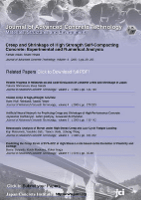
Journal of Advanced Concrete Technology
Leading the Charge in Concrete Technology ResearchThe Journal of Advanced Concrete Technology, published by the JAPAN CONCRETE INST, is a leading academic journal dedicated to the specialized field of concrete technology, offering invaluable insights and research findings that push the boundaries of knowledge in construction materials and engineering. With an ISSN of 1346-8014 and an E-ISSN of 1347-3913, this journal has been an influential platform since its inception in 2003, converging its focus through to 2024. The journal holds a commendable position within the Q2 category in both Building and Construction and Materials Science for 2023 and ranks in the 63rd and 47th percentiles, respectively, reflecting its significant contribution to these disciplines. Accessible only through traditional subscription models, it is a critical resource for researchers, professionals, and students looking to explore contemporary advancements in concrete applications and innovations. Engaging with this journal not only enables a deeper understanding of materials science but also fosters collaboration and dialogue within the global engineering community, making it an essential read for anyone invested in the future of construction technology.
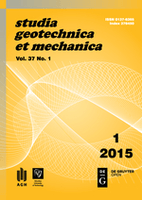
Studia Geotechnica et Mechanica
Pioneering Research in Geotechnics and Structural EngineeringStudia Geotechnica et Mechanica is a distinguished academic journal dedicated to the vital fields of geotechnics, civil engineering, and materials science. Published by SCIENDO, this Open Access journal has been facilitating unrestricted access to research since 2012, allowing for wide dissemination of innovative findings and methodologies. Based in Poland, it contributes significantly to the scholarly community by providing a platform for the exchange of ideas, techniques, and advancements relevant to Civil and Structural Engineering, Geotechnical Engineering, and related disciplines. With an increasing emphasis on applied research, Studia Geotechnica et Mechanica is classified in various quartiles, demonstrating its emerging influence in fields such as Computers in Earth Sciences and Mechanics of Materials. The journal is indexed in Scopus, showcasing its commitment to maintaining high academic standards. By publishing peer-reviewed research articles, this journal is essential for researchers, professionals, and students looking to stay at the forefront of developments in these critical areas of engineering and science.
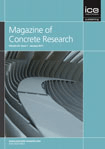
MAGAZINE OF CONCRETE RESEARCH
Shaping the Future of Construction Through Concrete ResearchThe Magazine of Concrete Research, published by Emerald Group Publishing Ltd, is a pivotal journal in the fields of Building and Construction, Civil and Structural Engineering, and Materials Science, boasting an impressive track record since its inception in 1949. As of 2023, it holds a Q2 category ranking across its related disciplines, indicating its strong influence and credible contributions to the field with Scopus ranks placing it favorably among its peers. With an emphasis on advancing knowledge surrounding concrete technology and construction practices, this journal serves as a key resource for researchers, industry professionals, and students alike. Though not Open Access, the Magazine of Concrete Research continues to cut through the complexities of concrete-related innovations, inspiring advancements in both academic research and practical applications. Engage with the latest findings and technological developments in concrete research, ensuring you stay at the forefront of this essential field.
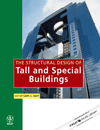
STRUCTURAL DESIGN OF TALL AND SPECIAL BUILDINGS
Innovating Design for Skyward Structures.STRUCTURAL DESIGN OF TALL AND SPECIAL BUILDINGS is a prestigious journal published by Wiley that focuses on cutting-edge research and advancements in the field of structural engineering, particularly emphasizing tall and special structures. Since its inception in 2003, the journal has become an invaluable resource for academics and practitioners, showcasing innovative design methodologies, case studies, and theoretical contributions. With an ISSN of 1541-7794 and E-ISSN of 1541-7808, this esteemed publication holds impressive Scopus rankings, including Q1 in Architecture, making it a go-to source for the latest developments in engineering related to tall buildings and complex structures. The journal is known not only for its rigorous peer-reviewed articles but also for fostering a collaborative environment among professionals and researchers worldwide. Although it is not an open-access journal, readers from various disciplines, such as architecture, civil and structural engineering, and building construction, will find compelling insights that drive the industry forward. For those committed to excellence in structural design, STRUCTURAL DESIGN OF TALL AND SPECIAL BUILDINGS remains at the forefront of innovation and knowledge dissemination.
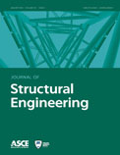
JOURNAL OF STRUCTURAL ENGINEERING
Building Knowledge for Tomorrow's StructuresThe JOURNAL OF STRUCTURAL ENGINEERING, published by the ASCE-AMERICAN SOCIETY OF CIVIL ENGINEERS, is a premier academic journal that focuses on the latest advancements in the field of structural engineering. With a rich history dating back to 1955, this journal has become a crucial platform for disseminating peer-reviewed research that addresses critical issues and innovative solutions in building and construction, civil and structural engineering, materials science, and mechanics. It proudly holds a Q1 quartile ranking across multiple categories in the 2023 Scopus rankings, indicating its influential presence in the academic community. The journal does not currently offer open access options, ensuring that the content is rigorously vetted for quality and relevance, thus appealing to researchers, industry professionals, and students seeking credible, impactful research. With contributions from leading experts, the JOURNAL OF STRUCTURAL ENGINEERING is essential reading for anyone interested in advancing their understanding and practice within this vital area of engineering.

ACI STRUCTURAL JOURNAL
Pioneering Insights in Concrete and Structural DesignThe ACI Structural Journal, published by the American Concrete Institute, serves as a premier platform for scholarly articles and research findings in the fields of building and construction and civil and structural engineering. With a commitment to advancing concrete technology and its applications, this journal has amassed an impressive reputation, holding a Q2 ranking in both Building and Construction and Civil and Structural Engineering categories as of 2023. The journal’s focus on innovative research and practical applications enables professionals, researchers, and students to stay at the forefront of industry developments. Although it does not offer open access, the content bears significant impact, ensuring that readers engage with high-quality research. As the journal converges its years of publication from 1987 to 2024, it continues to enrich the academic and professional discussions surrounding structural engineering and concrete science.
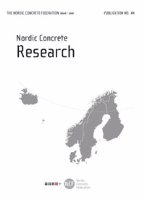
Nordic Concrete Research
Elevating Knowledge in Concrete Practices WorldwideNordic Concrete Research is a prestigious journal dedicated to advancing the field of concrete technology and engineering, published by SCIENDO. With an ISSN of 0800-6377 and an E-ISSN of 2545-2819, this journal provides a robust platform for scholars, researchers, and industry professionals to share innovative research findings and insights related to concrete materials, practices, and applications. Since becoming an Open Access publication in 2018, it has enhanced accessibility for global readers, promoting wider dissemination of knowledge and collaboration across disciplines. The journal's commitment to excellence in scholarly communication is evident as it invites contributions that address both fundamental and applied aspects of concrete science, supporting the continuous evolution of this essential material in sustainable construction practices. Situated in Warsaw, Poland, Nordic Concrete Research not only serves the Nordic region but also aims to impact the international concrete community.